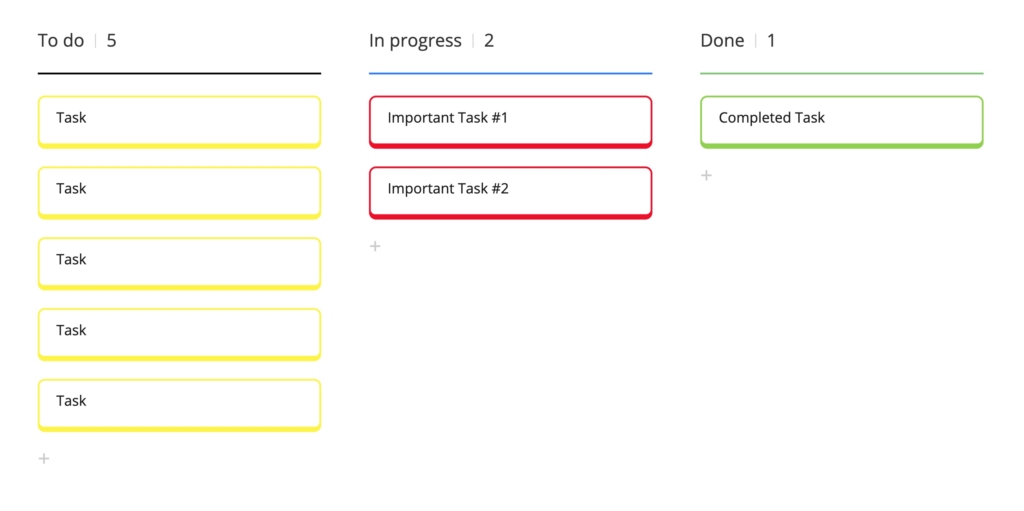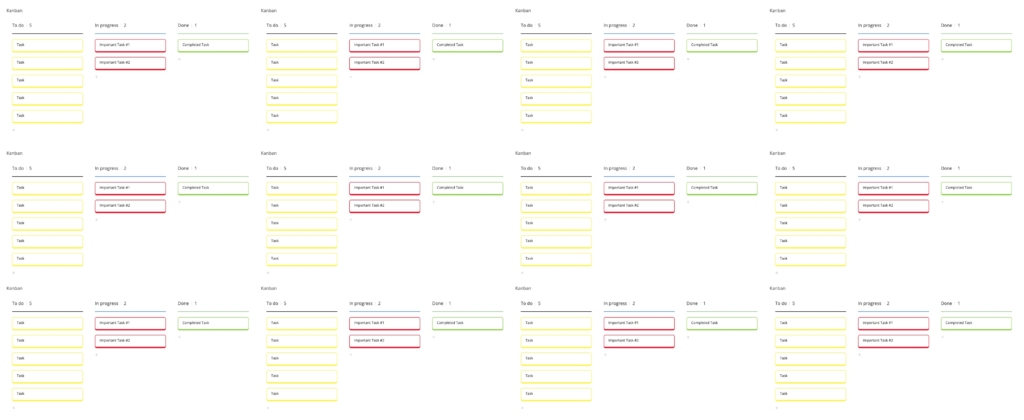Whether you are an individual or a team, you probably think a lot about your productivity.
- You might worry about the number of items on your to-do list and whether you’re getting enough done.
- You might worry about whether you’re getting the right/most important work done.
- You might worry that there’s so much on your plate that you won’t be present when you’re off the clock.
All of these are valid and more common than we tend to realize. Our standard method for solving this conundrum is to try and get more done by working faster, trying harder, and putting in more hours.
This is not a good long-term solution and inevitably put us right back where we started.
Why working harder and faster isn’t the answer
The big problem here is that working harder and faster only resolves the immediate symptoms of the problem rather than the underlying structure that produces the problem.
The reason we inevitably end back where we started is because…
- we have no model for knowing what is the most important work to do
- we have no method for knowing what can be safely ignored
- we maintain the mistaken belief that it’s actually possible to get everything done
The first two stem from a lack of clarity around what is and is not important. This is both a Brand Strategy problem and a priority management problem.
The third one is simply delusion.
The Delusion of Getting it all Done
The reason the belief that we can get everything done is a delusion is because of a variation on Parkinson’s Law I’ve lovingly and self-referentially named Gibbard’s Law — I couldn’t find an existing name for it.
- Parkinson’s Law is where work expands to fill the time allotted.
- Gibbard’s Law is where new work/project are added to fill the time created by increased productivity.
If you, like me, are always at full capacity with more projects than you could possibly handle, it’s probably for this reason. No matter how many more hours I work or how much faster I get, all that does is create more time that I inevitably fill with more projects. It’s a compulsion driven by creativity, ambition, and fear.
When a company gives a productive employee more work because they finish things faster, while failing to increase their pay, we don’t need a name like Gibbard’s Law because we’d simply call it what it is: exploitation.
If we can dispel the delusion and accept that we can’t get everything done, the only logical next step is to start getting clarity about what we should work on.
The Solution is Limiting Work in Progress (”WIP”)
One of the key principles of Agile project management is limiting the amount of work you have in progress at one time.
This helps to keep a team focused on 1 or 2 things at a time rather than the standard laundry list of tasks. By putting this idea into practice, people who are doing the work are prepared to dedicate more of their time, focus and energy to getting one thing done.
This proves, for many teams, to be the difference between shipping completed work instead of continuously chipping away at a group of partially completed projects.
I have become remarkably adept at applying this principle. When I have a project, I list all of the things that need to be done, and then choose the 1-2 most important tasks I will work on. I ignore everything else on the list.

Should you prioritize your most important tasks in this way, this will undoubtedly help you get more of your most important work done.
But, there’s a trap.
The Gibbard’s Law WIP Loophole
It only occurred to me recently that while I’ve done an excellent job of limiting my work in progress within a particular project, Gibbard’s Law has simultaneously let the number of projects grow wildly out of control.
I would look at my In Progress column and feel a swell of pride that I’d successfully limited the number of tasks I’m working on. All the while, neglecting to realize that the number of In Progress columns with tasks in it had grown beyond control.

It turns out, I hadn’t really been limiting my work in progress, just creating more columns to put it in. It’s the illusion of a clean house where all of the clutter is piled behind a closet door.
Fixing the Loop Hole and Doing Meaningful Work
When we mistake all work as important, we set ourselves up for burnout.
To be more productive, in a meaningful way, requires us to know what is most important and give it the required focus it deserves.
This means limiting our work in progress to the most important and impactful tasks.
However, it also requires us to close the loop holes that result from those gains in productivity. Increases in productivity should not be seen as an opportunity to push ourselves or others, harder, faster, and longer.
Instead, we should enjoy the additional time we’ve created to indulge our creativity or take a breather. We should be willing to forego busy in favor of effective and purpose-driven.
As for me, I’m tabling some project and reseting my own expectations about what is really possible, but more so what is really important.
I hope you enjoyed this post.
If this is your first time here or you haven’t yet become a subscriber, I hope you’ll join me.
If you’re already a subscriber, I hope you love it enough to help support my work as a writer by becoming a member, where you’ll also get all sorts of other benefits.


